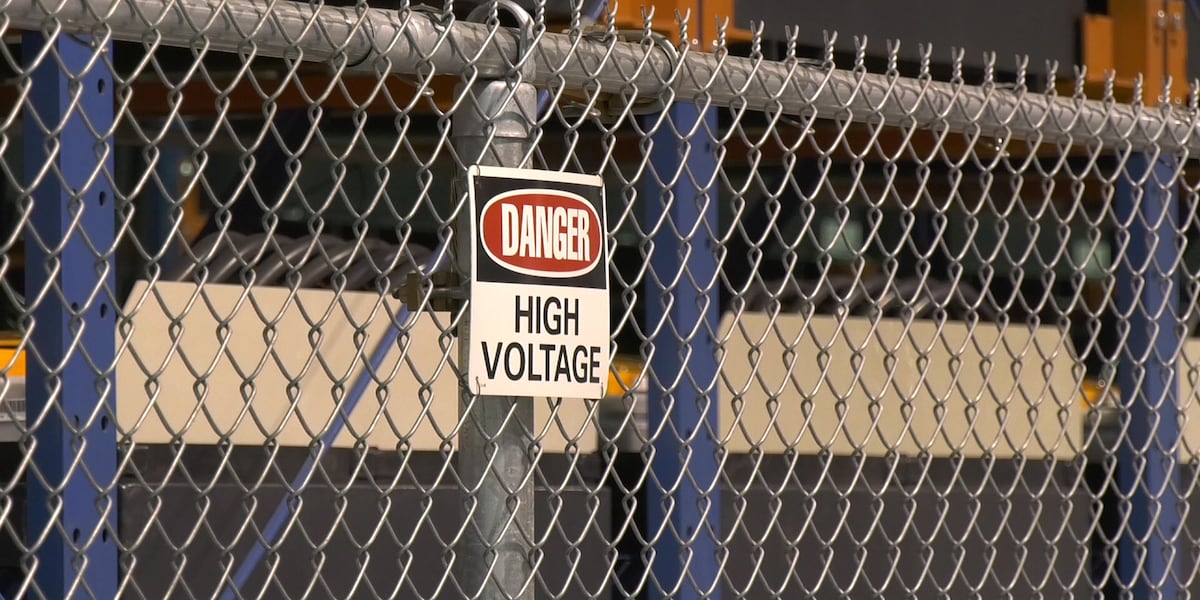FAIRBANKS, Alaska (KTVF) – Like a late-career star athlete, Golden Valley Electric Association’s (GVEA) existing Battery Energy Storage System (BESS) is set to transition from record breaker to second string.
The utility constructed a 40-Megawatt BESS in 2003, then becoming the largest battery in the world and picking up accolades from the utility industry. That record now belongs to a 750-Megawatt system in California.
But so far as Interior Alaska goes, the BESS now has a 46-megawatt counterpart waiting in the wings.
The U.S. Department of Agriculture (USDA) announced Wednesday that GVEA will receive a $100 million loan through the Powering Affordable Clean Energy (PACE) program to help fund construction of the new BESS.
“Over the course of the last several months, folks at the Rural Utilities Service have been working with utilities across the country to figure out and to allocate the resources under this program,” USDA Secretary Tom Vilsack said during the Wednesday press conference.
Of the $100 million, $60 million will qualify for loan forgiveness due in large part to support from Doyon, Limited — an Interior Alaska’s Native Corporation — according to GVEA.
About 80% of the loan will go toward the new Lithium-Ion BESS, with roughly 20% set aside for upgrades to the Nenana substation and the installation of a connecting line between that substation and the Nenana Solar Farm.
The aging Cadmium-Nickel BESS has prevented nearly 1,100 outages over the course of its waning lifetime, according to GVEA data. GVEA footed the entire $35 million bill for its construction in 2003.
The utility intends the new system to fulfill a similar purpose but also help store energy generated by renewables, given the inevitable fluctuations in supply from renewable sources like wind and solar.
“It has the additional capabilities of being able to regulate those renewables, unlike our current BESS,” GVEA Director of External Affairs and Public Relations said in a Wednesday interview.
There aren’t yet plans to retire the 21-year-old old system, though the 13,760 nickel-cadmium cells have a lifespan of 20 to 30 years. GVEA expects a similar lifespan for the new system once it’s built.
“It’s not intended to replace our existing BESS. Our existing BESS is reaching its end of life. We have yet to determine if we will be making necessary upgrades to it or not,” Bradish said.
GVEA also says the PACE battery will use grid-forming inverter technology as opposed to grid-following inverter technology. That means the battery will be able to create electric frequency absent other generation, whereas the older, grid-following technology requires something to be running on the grid before it can kick in and follow a given frequency.
The new battery will interconnect at Golden Valley’s Wilson Substation, near Bidwill Avenue. Bradish said there’s no definite timeline for when construction will start and end as of now, but she said that the funds from the federal loan must be dispersed by 2031.
GVEA released an RFP for construction of the PACE BESS in 2022 but has not yet chosen a bidder, according to Bradish.
“GVEA has narrowed the field of respondents to this RFP and has been working with them during the PACE application process. No contracts have been awarded, as that was contingent on receiving PACE funding. Now that GVEA has been awarded, moving forward we will work to finalize and award construction contracts,” she said.
Copyright 2024 KTVF. All rights reserved.


